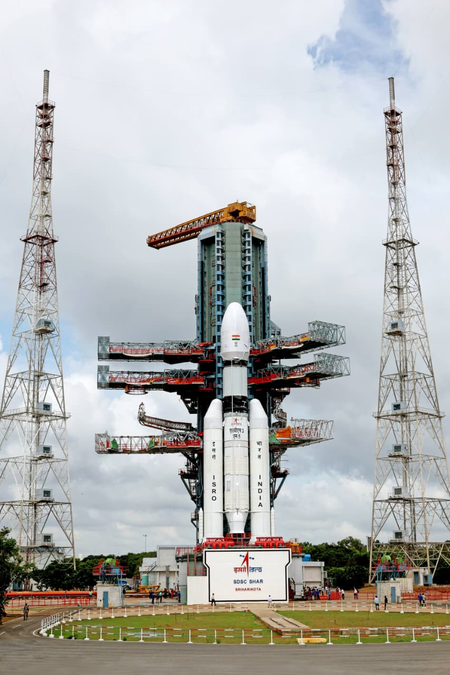
New Delhi — The Indian Space Research Organisation (ISRO) is set to launch the Indian Navy’s GSAT-7R (CMS-03) communication satellite from the Satish Dhawan Space Centre in Sriharikota, Andhra Pradesh, on Sunday. The new satellite will significantly boost the Navy’s space-based communication and maritime domain awareness capabilities.
According to the Defence Ministry, GSAT-7R will be the most advanced communication satellite ever deployed for the Indian Navy. Entirely designed and developed indigenously, the satellite weighs around 4,400 kg—making it India’s heaviest communication satellite to date. It incorporates several state-of-the-art components created specifically to meet the Navy’s operational requirements.
The GSAT-7R will provide robust telecommunication coverage across the Indian Ocean Region, featuring transponders capable of supporting voice, data, and video links across multiple communication bands. With its high-capacity bandwidth, the satellite will enable seamless and secure connectivity between ships, aircraft, submarines, and the Navy’s Maritime Operations Centres.
Highlighting India’s focus on self-reliance in defence technology, the ministry said GSAT-7R represents the Navy’s commitment to safeguarding the nation’s maritime interests through cutting-edge innovation under the vision of Aatmanirbharta.
ISRO described CMS-03 as a multi-band communication satellite that will offer services across a vast oceanic region, including the entire Indian landmass.
The satellite will be launched aboard India’s most powerful rocket, the LVM3, which can carry payloads of up to 4,000 kg into space. The same launch vehicle previously delivered the Chandrayaan-3 mission to the Moon, making India the first nation to successfully land near the lunar south pole. The upcoming launch, designated LVM3-M5, marks the rocket’s fifth operational flight.
ISRO confirmed that the launch vehicle has been fully integrated with the spacecraft and was moved to the launch pad on October 26 for final pre-launch operations.
GSAT-7R will replace the GSAT-7 “Rukmini” satellite, which was launched in 2013. With upgraded payloads and enhanced capabilities, GSAT-7R is designed to expand secure multi-band communications and strengthen the Navy’s operational reach across critical maritime domains.
The CMS-03 payload includes transponders for voice, data, and video links over C, Extended C, and Ku frequency bands.
With inputs from IANS